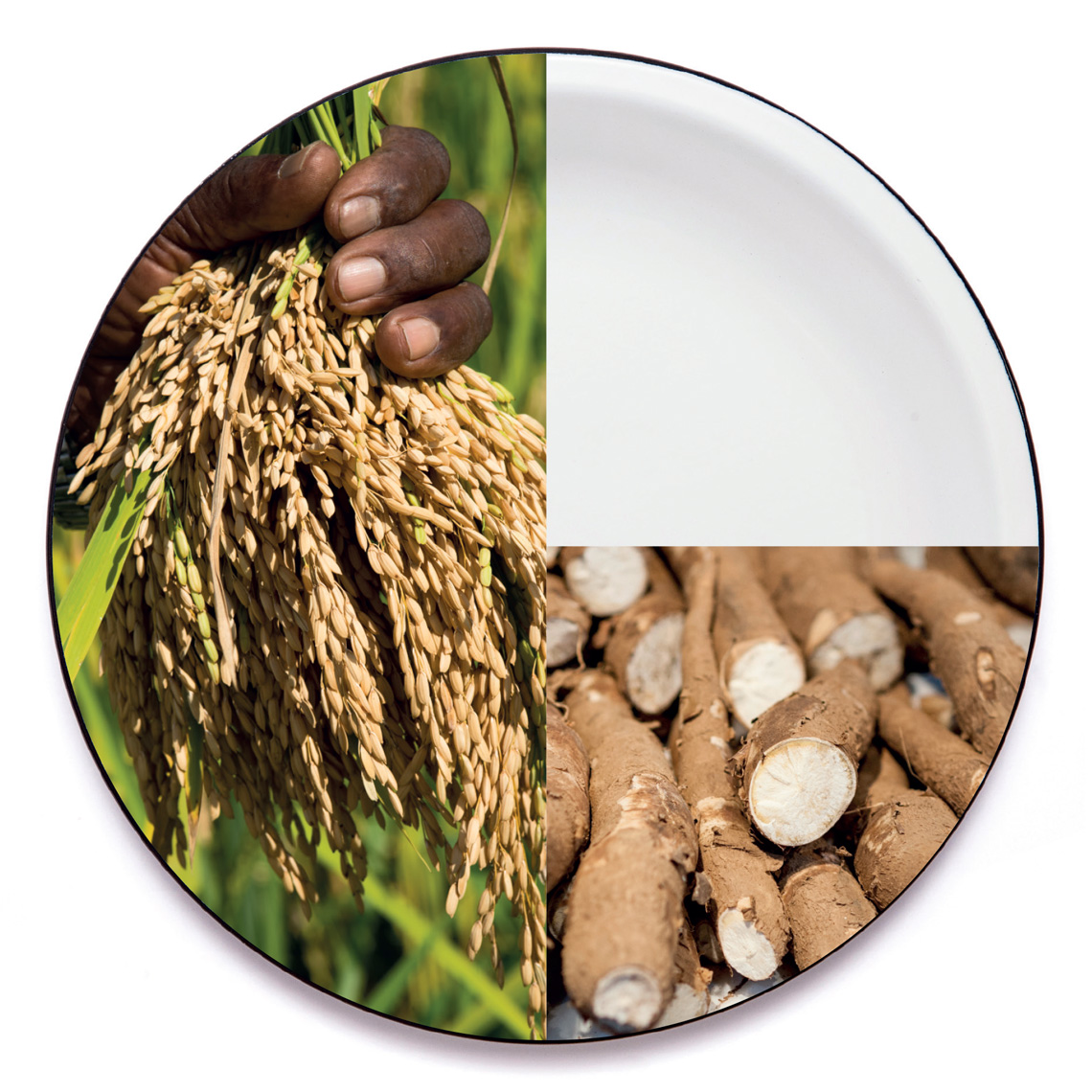
Eduardo Cesar / Revista Pesquisa FAPESP | Léo Ramos Chaves / Revista Pesquisa FAPESPResearchers are investigating how climate change affects crops such as rice and cassavaEduardo Cesar / Revista Pesquisa FAPESP | Léo Ramos Chaves / Revista Pesquisa FAPESP
The cultivation of rice and beans, two central ingredients in the Brazilian diet, faces challenges related to rising global temperatures, higher levels of carbon dioxide in the atmosphere, and declining water availability for irrigating crops. Confronted with the worsening climate crisis, the country needs to invest in the research and development of technologies capable of improving the adaptability of its food production processes.
Coffee, beans, and rice are the most consumed daily items per capita in Brazil, according to a 2020 survey by the Brazilian Institute of Geography and Statistics (IBGE). Domestic production is not enough to meet the demand for beans, which is supplemented by imports. To meet local demand by 2050, EMBRAPA found that bean production will have to grow by 44%, equivalent to an increase of 1.5 million tons. The research, carried out in partnership with the Luiz de Queiroz College of Agriculture at the University of São Paulo (ESALQ-USP), was published in the journal Agricultural Systems in 2022. “This expansion will have to take place in a scenario marked by the adverse effects of climate change,” warns Alexandre Bryan Heinemann, an agronomist from the Rice and Beans Unit of the Brazilian Agricultural Research Corporation (EMBRAPA) in Goiás.
The total area in Brazil used to grow rice and beans decreased by more than 30% between 2006 and 2022, according to the IBGE’s Systematic Survey of Agricultural Production. In the same period, the cultivation of soybean and maize — two of the country’s biggest agricultural exports — increased by 86% and 66% respectively. “Growing products for export is more profitable, but it does not help improve food security in the country,” points out Heinemann. Another study led by the researcher, published in Frontiers in Sustainable Food Systems in 2022, found that by 2050, the effects of the climate crisis could lead to a reduction of up to 60% in the amount of water needed to produce upland rice in Goiás, Rondônia, Mato Grosso, and Tocantins.
In 2018, concerned about the impacts of droughts and rising temperatures on the production of basic foodstuffs, the Agronomic Institute (IAC) of São Paulo’s Department of Agriculture and Food Supply launched its first bean cultivar designed to cope with water shortages. The research identified that bean plants with more aggressive roots are able to absorb more nutrients and water from deeper in the earth. Another finding was that precocious plants with short growing cycles are more tolerant to climatic stresses. “Improving the adaptability of our crops is one of our greatest challenges,” says IAC agronomist Alisson Fernando Chiorato.
Cassava, named the food of the twenty-first century by the Food and Agriculture Organization of the United Nations (FAO) in 2018, is one of the crops that best adapts to the effects of climate change, according to other studies by EMBRAPA. Research carried out since 2017 by agronomist Jailson Lopes Cruz concluded that high atmospheric concentrations of CO2 alleviate the inhibitory effects of drought on the physiology and growth of cassava plants. This means that new areas can be incorporated into the cassava production process, especially in semiarid regions, improving the supply of this product. “This crop is also highly versatile. It can be eaten directly, but its derivatives, such as starch flour, can also be used as ingredients for other products, generating income for the producer,” concludes Carlos Estevão Leite Cardoso, an agronomist from EMBRAPA Cassava and Fruticultura.
Republish
